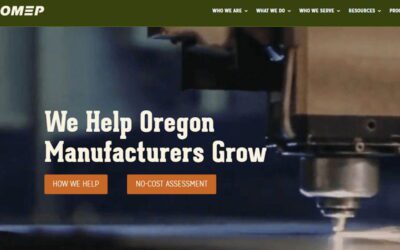By: Brian Lagas
“Why are our changeovers taking so long?”
If you’ve asked this question on the shop floor, more than likely you were met with blank stares by your employees. Open-ended questions like this are overwhelming, so employees try to find quick answers that don’t really address the problem. They don’t have a starting point to form an answer.
But what if you asked a question with a specific, achievable goal?
“What steps can we take to reduce changeover time by 15 minutes?”
You’ve then provided your employees with a measurable goal in the form of a question. Your workers may feel empowered to answer with some hands-on suggestions for incremental changes, such as reducing setup steps or combining workstations. This in turn could not only reduce changeover time, but significantly eliminate wait times and inventories.
This approach is often described as Kaizen, or “continuous improvement,” which serves as the backbone for lean manufacturing. Kaizen uses the Plan, Do, Check, Act (PDCA) problem-solving cycle to encourage manufacturers to use small ideas to solve big problems, such as costly, time-intensive changeovers.
These methodologies are the building blocks of Toyota Kata, an innovative, lean way of thinking described in the book by Mike Rother, “Toyota Kata: Managing People for Improvement, Adaptiveness and Superior Results.”
In essence, Toyota Kata goes beyond problem-solving to teach management, engineers, and operators a new mindset to develop their creative and scientific-thinking skills to make them more effective, lean manufacturers. This approach looks at lean manufacturing as a culture, rather than a single process.
With the world of manufacturing evolving at a breathtaking pace thanks to developments such as Artificial Intelligence (AI), labor skill gaps, and the Industrial Internet of Things (IIoT), Toyota Kata gives smaller manufacturers a lean strategy to help them grow with these developments. It empowers employees with the skills they can use to continuously improve, adapt, and generate ideas for a strategic, competitive advantage.
Small Steps Lead to Big Results for Manufacturers
Toyota is known as the most successful early adopter of Kaizen and the originator of the “continuous improvement” philosophy for manufacturers as part of its innovative Toyota Production System. This approach helped the company create vehicles famous for their reliability, while eliminating production waste, time, and energy resources. Toyota’s “plan slowly and act quickly” philosophy helped create the Prius hybrid, which positioned the company as the leader in hybrid technology. More than 80 years after the company’s founding, Toyota is the world’s largest automaker.
Toyota Kata builds on Toyota’s “continuous improvement” success model, so other manufacturers can learn from its example. This approach has become increasingly popular with manufacturers who want to move beyond short-term production goals to empower their workforce to implement daily, sustainable process improvements.
In Arkansas, Almatis Premiun Alumina had previous experience working with lean tools and using those tools in the traditional point solutions approach that led to obvious improvements and positive results. The challenge was to sustain continuous improvement. The company was interested in revitalizing its lean efforts and pursuing sustainability. Almatis contacted the Arkansas Economic Development Commission – Manufacturing Solutions (AEDC-MS), the MEP Center in Arkansas, for assistance.
AEDC-MS sought to create a program that would target bottom-line improvements through process cost reductions. A team of 18 people identified, managed and capitalized on opportunities within the manufacturing process. AEDC-MS led eight hours of Lean 101 training, including introductions to the Improvement Kata. Then, the team used leadership coaching to focus on individual responsibilities, human nature’s tendency to oppose change and exposure to the scientific process of continuous improvement. Sixteen hours of Value Stream Mapping was used to address the needs of a specific manufacturing line and office activities. Extra time was spent with the Almatis management team to assure they were ready for Kata delivery. A three-day Toyota Kata session led to a $12,000/month savings in the first two days of implementation, providing a full return on investment within the first 30 days of improvement.
Other results achieved included:
- $2.5M in increased or retained sales over one year
- 160 new or retained jobs
- $200,000 in cost savings
- $475,000 in new investment
How to Integrate Toyota Kata Within Your Facility
To help small and medium-sized manufacturers achieve lean success like Almatis and Toyota, the MEP National NetworkTM has developed a Toyota Kata overview: Toyota Kata: Developing the Skills to Thrive in Today’s Constantly Changing Marketplace.
This overview highlights that, while smaller manufacturers may not have the level of strategic resources like the behemoth Toyota, they can apply the same methodologies of Toyota Kata, including:
- Developing new habits and allowing people to think differently about problems and goals
- A way of working, and of working together
- Using scientific thinking as an ingredient to make teams and organizations more effective and successful
- Developing a culture of continuous learning and improvement at all levels through deliberate practice
Implementation of Toyota Kata begins with the aptly-named Starter Kata. Starter Kata focuses on small protocols and processes that, when practiced early and often, help manufacturing employees learn faster and teaches them to work more collaboratively. The two main elements of Starter Kata are Improvement Kata and Coaching Kata, as noted in the above Almatis example.
The Improvement and Coaching Kata help employees:
- Understand the direction or challenge
- Grasp the current condition
- Establish the next target condition
- Experiment toward the target condition
By integrating Toyota Kata as part of your manufacturing best practices, your employees can successfully overcome obstacles and develop more confidence and scientific thinking to solve problems.
The MEP National Network’s overview of Toyota Kata is a first step to empowering your workforce to become more agile, so they can find new ways to cut waste, develop new technologies, and adapt to these new changes in the ever-increasing competitive world of manufacturing.



